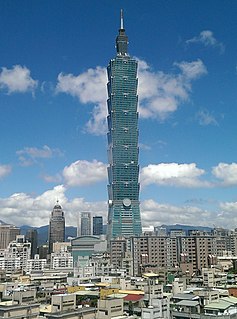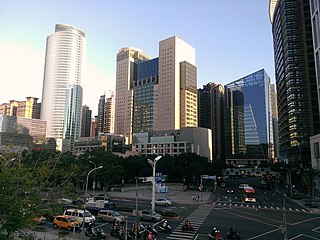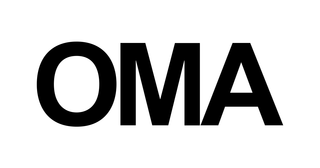Related Research Articles

Taipei, officially Taipei City, is the capital and a special municipality of Taiwan. Located in Northern Taiwan, Taipei City is an enclave of the municipality of New Taipei City that sits about 25 km (16 mi) southwest of the northern port city of Keelung. Most of the city rests on the Taipei Basin, an ancient lakebed. The basin is bounded by the relatively narrow valleys of the Keelung and Xindian rivers, which join to form the Tamsui River along the city's western border.

The National Palace Museum, located in Taipei, Taiwan, has a permanent collection of nearly 700,000 pieces of ancient Chinese imperial artifacts and artworks, making it one of the largest of its type in the world. The collection encompasses 8,000 years of history of Chinese art from the Neolithic age to the modern. Most of the collection are high quality pieces collected by China's emperors. The National Palace Museum shares its roots with the Palace Museum in the Forbidden City, whose extensive collection of artwork and artifacts were built upon the imperial collections of the Ming and Qing dynasties.

The Taipei 101, formerly known as the Taipei World Financial Center (臺北國際金融中心), is a skyscraper designed by C.Y. Lee and C.P. Wang in Taiwan, Republic of China. This building was officially classified as the world's tallest from its opening in 2004 until the 2009 completion of the Burj Khalifa in Dubai, UAE. Upon completion, it became the world’s first skyscraper to exceed a height of half-a-kilometre.

New Taipei City is a special municipality and the most populous city in Taiwan. Located in northern Taiwan, the city includes a substantial stretch of the island's northern coastline and surrounds the Taipei Basin, making it the second largest special municipality by area, behind Kaohsiung. New Taipei City is bordered by Keelung to the northeast, Yilan County to the southeast, and Taoyuan to the southwest. It completely surrounds Taipei. Banqiao District is its municipal seat and biggest commercial area. Until 2010, the area that roughly corresponds to the present New Taipei City was known as Taipei County.

The National Chiang Kai-shek Memorial Hall is a famous national monument, landmark and tourist attraction erected in memory of Generalissimo Chiang Kai-shek, former President of the Republic of China. It is located in Zhongzheng District, Taipei.

Taipei Main Station is a railway and metro station in Taipei, Taiwan. It is served by Taiwan High Speed Rail, the Taiwan Railways Administration, and the Taipei Metro. It is also connected through underground passageways to the terminal station of Taoyuan Airport MRT and the Taipei Bus Station. In 2017, it was the busiest station on all three rail systems, with a total of 190 million entries and exits.

The Office for Metropolitan Architecture (OMA) is a Dutch architectural firm based in Rotterdam, founded in 1975 by Dutch architect Rem Koolhaas and Greek architect Elia Zenghelis, along with Madelon Vriesendorp and Zoe Zenghelis.

The Presidential Office Building is the work place of the President of the Republic of China on Taiwan. The building, located in the Zhongzheng District in the national capital — Taipei, was designed by architect Uheiji Nagano during the period of Japanese rule of Taiwan (1895–1945). The structure originally housed the Office of the Governor-General of Taiwan. Damaged in Allied bombing during World War II, the building was restored after the war by Chen Yi, the Governor-General of Taiwan Province. It became the Presidential Office in 1950 after the government of the Republic of China lost control of mainland China and relocated the nation's capital to Taipei at the end of the Chinese Civil War. At present, this Baroque-style building is a symbol of the Government and a famous historical landmark in downtown Taipei.

The Taipei Fine Arts Museum is a museum in Zhongshan District, Taipei, Taiwan. It is in the Taipei Expo Park. The museum first opened on August 8, 1983, at the former site of the United States Taiwan Defense Command. It was the first museum in Taiwan built for contemporary art exhibitions. The architecture is a local interpretation of the Japanese Metabolist Movement, and the building was designed by architect Kao Er-Pan.

Marco Casagrande is a Finnish architect, environmental artist, architectural theorist, former mercenary, writer and professor of architecture. He graduated from Helsinki University of Technology department of architecture (2001).

Shin Kong Life Tower, at 51 stories and a height of 245 meters (803.8 ft), is one of Taiwan's earliest skyscrapers. The rose-colored tower topped by a pyramid stands in Zhongzheng District, Taipei, and dates from 1993. Its first twelve floors and two underground floors house a Shin Kong Mitsukoshi Department Store; the remaining floors provide office space and serve as headquarters for the Shin Kong Life insurance company. The building stands across Zhongxiao Road from Taipei Main Station near the Asiaworld Department Store.

The Museum of World Religions is a museum in Yonghe District, New Taipei, Taiwan.

The 228 Peace Memorial Park is a historic site and municipal park located at 3 Ketagalan Boulevard, Zhongzheng District, Taipei, Taiwan. The park contains memorials to victims of the February 28 Incident of 1947, including the 228 Memorial Monument that stands at the center of the park and the Taipei 228 Memorial Museum, housed at the site of a former radio station that operated under Japanese and Kuomintang rule. The National Taiwan Museum stands at the park's north entrance. The park also has a bandshell and exercise areas.

The Taipei Music Center is a performing arts and cultural venue in Nangang District, Taipei, Taiwan.

Kris Yao is a Taiwanese architect, and the founder and head architect at KRIS YAO | ARTECH in Taipei and Shanghai.

The Taipei Twin Towers is a supertall skyscraper development in Taipei, Taiwan. Scheduled to be completed in 2027, it includes two skyscrapers, the taller of which is 360 metres (1,181 ft) with 76 floors and the shorter of which is 280 metres (919 ft) with 56 floors. It is located near Taipei Station, Shin Kong Life Tower, and Taipei Bus Station. When the complex is complete, it will be the second tallest building in Taipei and third tallest in Taiwan after Taipei 101 and Kaohsiung's 85 Sky Tower. It is estimated to cost NT$12 billion. The project was originally designed by Japanese architect Fumihiko Maki for the initial 2005 bid that planned to finish constructing the skyscrapers by 2011. However, it was delayed multiples times due to a series of complication in the bidding process, which was restarted in 2018 again for the sixth time.

The Danhai light rail is a light rail transit (LRT) network in Tamsui District, New Taipei City, Taiwan. It opened on 23 December 2018 and began service the following day.
The architecture of Taiwan can be traced back to stilt housing of the aborigines in prehistoric times; to the building of fortresses and churches in the north and south used to colonize and convert the inhabitants during the Dutch and Spanish period; the Tungning period when Taiwan was a base of anti-Qing sentiment and Minnan-style architecture was introduced; in Qing dynasty period, a mix of Chinese and Western architecture appeared and artillery battery flourished during Qing's Self-Strengthening Movement; During the Japanese rule of Taiwan, the Minnan, Japanese and Western culture were main influencers in architectural designs and saw the introduction and use of reinforced concrete. Due to excessive Westernization as a colony, after the retrocession of Taiwan to the Republic of China in 1945 from Japan at the end of World War II, Chinese classical style became popular and entered into international mainstream as a postmodern design style. Today, Taiwanese architecture has undergone much diversification, every style of architecture can be seen.
The New Taipei Museum of Art is an upcoming museum in Yingge District, New Taipei, Taiwan.

Huang Baoyu was a Taiwanese artist, calligrapher and architect, known for designing the National Palace Museum in Taipei, Taiwan. His design for the museum was chosen after the original competition winner, Wang Da-hong, refused to modify his design to comply with the government's wishes. Huang specialised in the traditional Chinese palace style, and was the favourite architect of former leader, Chiang Kai-shek.